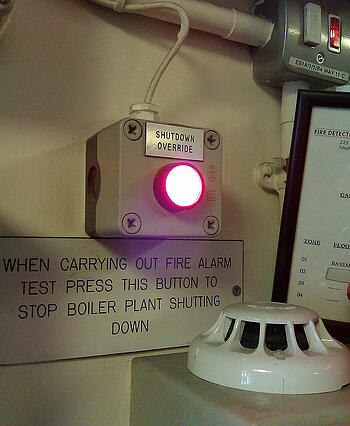I'm seeing the promise of an open platform for building controls. It was encouraging to read recently that ABB, Bosch, and Cisco are starting a joint venture to develop an open platform for smart home devices. The intent of the open platform is to “enable . . . simple exchange of data between different manufacturer’s devices”, and to “provide a range of services related to household devices, in areas such as energy management, security technology, and entertainment.” The residential market is step one.
The Need for an Open Platform for Building Controls
In previous blog posts, I have discussed the need for an open platform for building controls — universal, intuitive applications for home HVAC and commercial lighting controls that benefit the end-user. My hope is that the development of an open platform for smart home devices will not only foster innovation for residential systems, but will also enable application of these innovations in the commercial building sector. There is significant opportunity to streamline and integrate the sophisticated control systems in commercial buildings, notably for lighting and HVAC.
State-Of-the-Art ... If They Are Actually Used
Commercial lighting and HVAC control systems on the market today are largely vendor-specific. The vendor-specific nature of the market offerings leads to compatibility issues, unnecessary complexity, and paradoxically, less control for building end-users and owners. Many building owners find it difficult to stay apprised of the rapid developments in building control systems and very often rely on system designers and vendors when selecting new control systems. Designers specify the system architecture and sequence of operations and vendors implement the details of the application. In my experience commissioning lighting and HVAC controls systems, the designer- and vendor-driven systems can leave the owner in the dark (both figuratively and literally!) when it comes to end-user control. Designer-specified, vendor-specific control systems provide a means for procuring state of the art controls, but do so at the cost of end-user control. It is not uncommon to find sophisticated control systems in a manual-override mode, which is a real shame given the wasted expense of the sophisticated controls and the lost benefits of system optimization.
Manual Overrides Negate System Sophistication
When I see a sophisticated lighting control system that is operated manually (e.g., daylight dimming deactivated, occupancy sensors deactivated, or lighting scene control set to full-on), I think to myself “somebody did not understand what they were getting or did not get what they expected.” Overly custom control sequence of operations (SOOs) that are not fully implemented by vendors/programmers can become extremely problematic for end-users. Even if successfully implemented, sophisticated SOOs may not meet the needs of the end-user. The end-user is then stuck with a complicated system that either fails to fully meet operational needs, or requires costly vendor expertise to reprogram. When I commission lighting control systems, the commissioning is typically the first time the systems work as designed, and the first time the owner is able to fully understand what was designed in the first place. An open, intuitive platform for lighting control systems would be a major breakthrough in satisfying the needs of building end-users.
The Promise for Commercial Buildings
An open platform that works for “smart” homes could be promising for developing streamlined, integrated, and intuitive control systems for commercial and institutional end-users. If nothing else, open platform innovations in the home would help to raise the expectations for integrated controls systems across building and market sectors.
For further reading:
The Blog of Ian Mercer - Home Automation
The Daintree Blog






